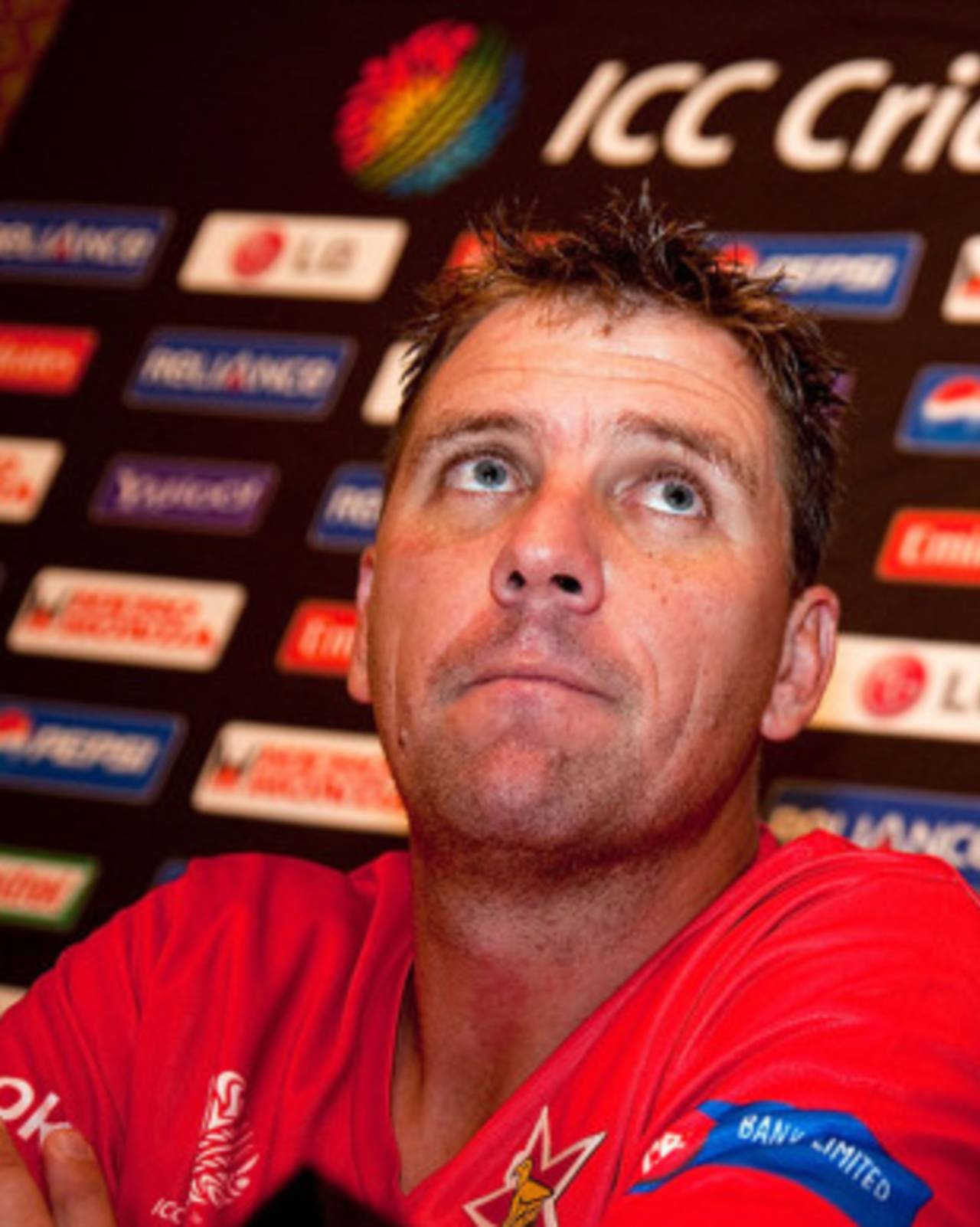Zimbabwe look for a bit of magic
For Zimbabwe this World Cup is a stage to show that their game has developed and a return to the top level isn't far away
Firdose Moonda
20-Feb-2011

Ray Price's experience will be crucial to Zimbabwe's World Cup hopes • Getty Images
The ugly stepsisters, the dysfunctional board and the defiant rebels have changed their self destructive ways. The pumpkin that had become Zimbabwe cricket slowly started transforming into a carriage and the Cinderella story of an unlikely revival hopes to reach its happy ending at this World Cup.
That doesn't mean taking home a cup, reaching the semi-finals or even being present in the knockout stage at all. It's just means giving a respectable enough account of themselves to prove that the improvement in their cricket is not merely a fairytale, but something tangible. "To justify what's been happening, we need to do things on the field," Prosper Utseya, the Zimbabwe offspinner said.
Utseya is referring to the newfound professionalism in Zimbabwe cricket, not just in their franchises system, but in their attitude. The system was established in August 2009, and now that it has had a full calendar year in operation, its fruits may be ready to flower. "We've learnt to be more competitive because the different franchises have all got overseas based cricketers to play in our tournaments as well," Utseya said.
Zimbabwe's first global competition after their revamp was the World T20 in the Caribbean in May last year. It turned out to be a massive disappointment for a team of hopefuls, who had spent ample time preparing and where conditions should have suited them, and they lost both their group matches to return home empty handed and without much pride. That they've brought a similar squad to the subcontinent for this World Cup is indicative of them not panicking and applying the first basic principle of engineering: buildings stand on foundations, not air.
"We want to be more consistent," Ray Price, Zimbabwe's senior left-arm spinner said. The granddaddy of the team, at 34 years old, has seen it all from the glory days to the gutter and this time he says that is convinced things are different. For him, they certainly are, having left Zimbabwe in 2003 for the county circuit as an ordinary bowler clutching to the fringes of the ODI team and coming back in late 2007 to soar to a career highest second on the ODI bowling rankings.
Like Zimbabwe cricket itself, Price underwent a mini-internal revolution just before his comeback. He decided on two things, one that he wanted make cricket his career for as long as he could and that he wanted to do that in Zimbabwe. "I had a terrible job before I was a cricketer," he said, referring to his qualification as an air conditioner repairman. "I just love cricket and I also love Zimbabwe. England was so restrictive. I missed the open space and the people. I'm an outdoors sort of person and Zimbabwe is a lot more peaceful, so I came back."
Now, he and Utseya form the pressure cooker of the Zimbabwean bowling attack. They are seen as the containers, the guys who "don't concede a lot of runs and wait for the batsmen to make a mistake." It helps that the two men who have to assume the most mature positions in the team are two of the most senior and understand their roles inside out. They also understand what is still lacking in the Zimbabwean set up and, although they can't do much about it themselves, are trying to ensure that everyone in the squad is aware of it and looking to rectify it.
The biggest concern at the moment is the absence of an out and out quick bowler and Utseya says that Zimbabwe have to learn to work within their limitations. "We've never had very quick bowlers, we usually to around 130kph or 135kph but you don't have to be quick to have control. It would be great for our seam bowlers to get a few early breakthroughs for us in this tournament." Price agreed, saying that the team "can't hide behind the spinners forever."
For this World Cup, they will be forgiven for being over reliant on the spinners, especially because conditions should suit the structure of their attack. Zimbabwe, who have a strategy of opening with a spinner, have a well rounded and developed spin unit which Utseya says is a result of their conditions in their home country and the circumstances in which they learn the game. "Having a lot of spinners has got to do with the wickets that we've got. It's also our body make up. We are not as naturally big as the South Africans for example. It could be something to do with the food we eat."
Whatever the cause of the breed of young tweakers that Zimbabwe are producing, it's working and it's the one element of their game that has helped them restore self belief that they could be a side able to compete with the big boys again. With team confidence has come public interest and legspinner Graeme Cremer said he noticed a marked difference in the attitude to cricket before the national squad left for their first set of warm-ups in Dubai. "People were genuinely interested in us and wishing us god luck for the tournament," he said. "The atmosphere around cricket has changed and the public is starting to care again."
For fans that have forgotten what it's like to see their team in Test kit, limited-overs is the ultimate source of competition for now. That's why a good showing at this World Cup will turn the players into Prince Charmings and the sport into magic once again.
Firdose Moonda is ESPNcricinfo's South Africa correspondent